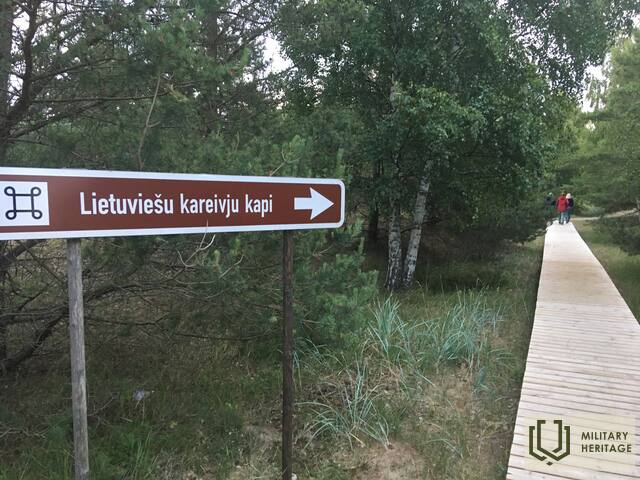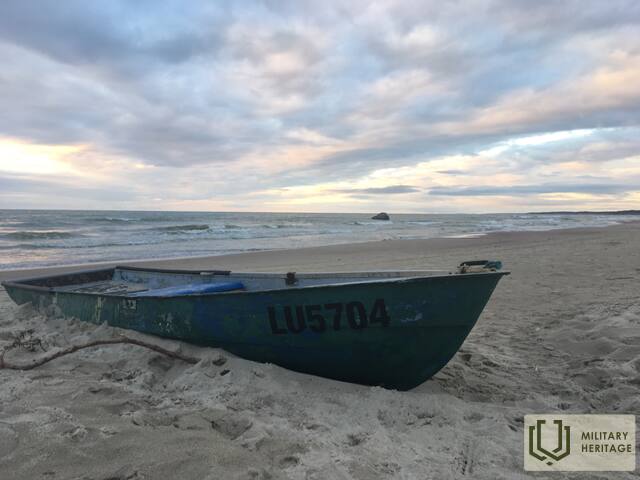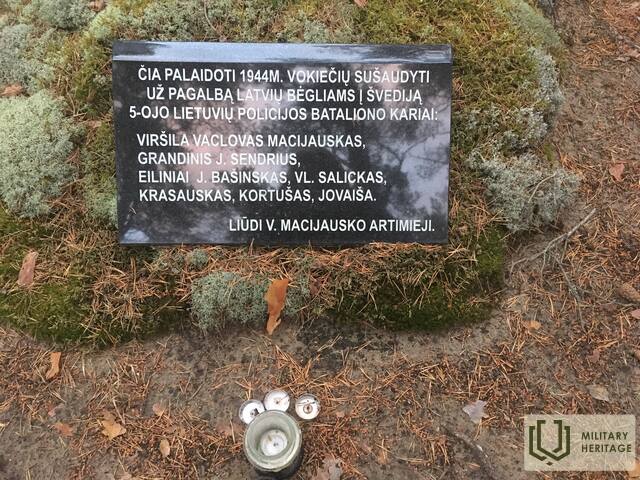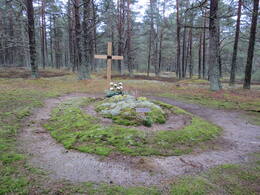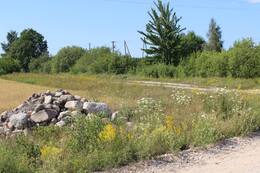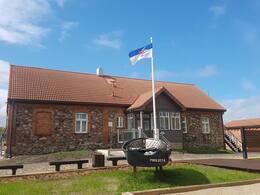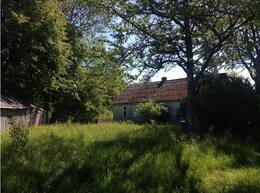Užjaučiantys Lietuvos pakrančių apsaugos vyrai
Prieš daugiau nei 70 metų Lietuvos pakrančių sargybiniams buvo įvykdyta mirties bausmė už tai, kad jie padėjo savo kaimynams, latviams laivų pabėgėliams, pasiekti Švediją. Apie tai sužinojusi okupacinė vokiečių valdžia žiauriai
Viena iš Lietuvos pakrančių apsaugos užduočių, be pasirengimo kovoti su priešo desantais ir pranešti apie priešo laivus, buvo neleisti latvių pabėgėlių laivams pasiekti už 160 kilometrų esančią Gotlando salą, kurią žvejų motorine valtimi būtų galima pasiekti per 12-14 valandų.
Tačiau vėliau Lietuvos pakrančių apsaugos darbuotojai tapo gerais latvių pabėgėlių draugais ir gailėjosi dėl neapgalvoto šaudymo priimant pabėgėlius į valtis. Apylinkėse prisiglaudusiems laiveliams pabėgėliams teko saugotis ir čia siautėjusio sovietų „Raudonosios strėlės“ milicijos dalinio, kuris 1944 metų gruodį Jūrkalnės pakrantėje ne tik apiplėšė civilius, bet ir vieną Lietuvos pakrančių apsaugos tarnybą nužudė, o kitą sužeidė.
Tačiau žinia apie Lietuvos pakrančių apsaugos pagalbą latvių pabėgėliams ir pačių lietuvių pasiruošimą jūra pereiti į Švediją pasiekė ir vokiečius.
1945 m. sausio 10 d. 5-ojo Lietuvos policijos bataliono 1-osios kuopos kariai buvo suburti senajame ambulatorijos pastate Pavilostos Turgaus aikštėje pailsėti, tačiau realiai jie buvo nuginkluoti ir apgaulės būdu apsupti vokiečių žandarmerijos dalinių. Vėliau sekė daugiau nei savaitė tardymo ir teismo, kuris, kaip įspėjimas kitiems, nutarė įvykdyti mirties bausmę septyniems Lietuvos kariams ir dar 11 jų bendražygių įkalinti koncentracijos stovyklose Vokietijoje. Septynių Lietuvos karių (kupos vadas seržantas Macijauskis; kareivis Juozas Sendrjuas; kareivis Vladas Salickas; Ionas Bašinskis, Krasauskas ir dar du nepažįstami asmenys) egzekucija įvyko 1945 m. sausio 21 d. Pavilostos Žalkalnio pušyse.
Apie juos buvo galima atvirai prabilti tik praėjus beveik pusei amžiaus, kai Latvijos liaudies fronto Pavilostos skyriaus narės Edytės Biģeles iniciatyva pavilostiečiai kartu su Liepojos lietuvių kultūros draugija 1994 metais sutvarkė Zaļkalnos girios laidojimo vietą ir įrengė baltą kapo kryžių čia sušaudytiems kariams. Po dešimties metų studentų dalinys „Austrums“ įrengė specialų kelio ženklą su užrašu „Pakrančių apsaugos brolių lietuvių kapinės (1944-1945). Sušaudytas už pagalbą latvių pabėgėliams“, nupjovė stiebą ir stulpais pažymėjo taką nuo pajūrio iki Lietuvos karių kapo.
Jau kelerius metus, Pavilostos kraštotyros muziejaus direktorės Irinos Kurčanovos paskatinti, muziejaus žmonės kasmet pavasarį tvarko aikštelę, dovanodami visiems norintiems galimybę padėti gėles ir prisiminti Lietuvos pakrančių apsaugos karius, kuriems daugiau nei prieš 70 metų buvo įvykdyta mirties bausmė už pagalbą kaimynams – latvių laivų pabėgėliams į Švediją.
https://www.la.lv/lietuviesu-karaviru-drama-latvija
Susijusi laiko juosta
Susijusios vietos
Lithuanian soldiers' graves in Zaļkalns Forest
The memorial is located near the Pāvilosta beach lookout tower in the dunes. There are signs pointing to the memorial.
At the end of the Second World War, three Lithuanian police battalions, the 5th, 13th and 256th, were also deployed in Latvia, and after guard duty and fighting against Soviet partisans and the Red Army on the Eastern Front, from autumn 1944 they were involved in guarding the Baltic Sea coast in Kurzeme.
In October 1944, all three battalions, consisting of 32 officers and about 900 instructors and soldiers, were subordinated to the German 18th Army's 583rd Rear Guard Unit (Koruck 583). The unit was tasked with guarding the Kurzeme coast from Liepāja to Ventspils. All three Lithuanian battalions were deployed in the vicinity of Pavilosta. In December 1944, the 13th Battalion was transferred to the German 1st Army Corps at the Liepaja Lake.
One of the tasks of the Lithuanian coastguard, besides being ready to fight enemy landings and to report enemy ships, was to prevent Latvian refugee boats from sailing to the island of Gotland, 160 kilometres away, but the Lithuanian coastguard men did not prevent the refugee boats from leaving. However, news of the Lithuanian coastguard helping the Latvian refugees and the Lithuanians themselves preparing to cross the sea to Sweden also reached the Germans.
On 10 January 1945, the soldiers of the 1st Company of the 5th Lithuanian Police Battalion were rounded up. More than a week of interrogation and trial followed, which, as a warning to the others, decided to execute seven of the Lithuanian soldiers and to imprison 11 of their comrades in concentration camps in Germany. The execution of the seven Lithuanian soldiers (Sergeant Macijauski, the company commander; Juozas Sendrjuas, a soldier; Vladas Salickas, a soldier; Ionas Bašinskis, Krasauskas and two unknown others) took place on 21 January 1945 in the Zaļkalns Pines in Pavilosta.
In January 1945, the 5th Battalion was disbanded and the combat-ready soldiers were divided into the two remaining battalions, while the rest were formed into a separate sapper company. At the time of the surrender of Army Group Kurzeme in May 1945, two battalions (13th and 256th) were still in Kurzeme as a sapper company with a total of 900 soldiers who were taken prisoner by the Soviets.
The road to "Grīnieku" houses in Vārve parish
The road to the "Grīnieku" house in Vārve parish, where in 1944 there was one of the main settlements of boat refugees on the coast of Kurzeme.
Pāvilosta local history museum exposition
Named ‘Pāvilosta, a Closed Area’, the exhibit in the Pāvilosta Local History Museum is about everyday life in the town of Pāvilosta during the Soviet occupation; specifically, about the executive branch, border area, fishermen’s collective farm, and the cultural and social activities. In addition to the permanent exhibit, there is an interactive and emotionally rich digital exhibit in two languages and an audio-visual installation offering a film about Pāvilosta.
The museum also features a new exhibit named ‘The Golden Sand Grains of Pāvilosta’. The digital installation showcases old events, how Pāvilosta was founded and the most important developments from 1918 to the present day. Military heritage is a point of focus in the War of Independence section, which tells a story about the freedom fighters of Latvia and the time of the Soviet occupation.
"Laukgaļi" house, writer Kārlis Skalbe's place of residence
"Laukgaļi" in Jūrkalne parish, the writer Kārlis Skalbe's place of residence in October-November 1944, while waiting for the refugee boat to Sweden.




